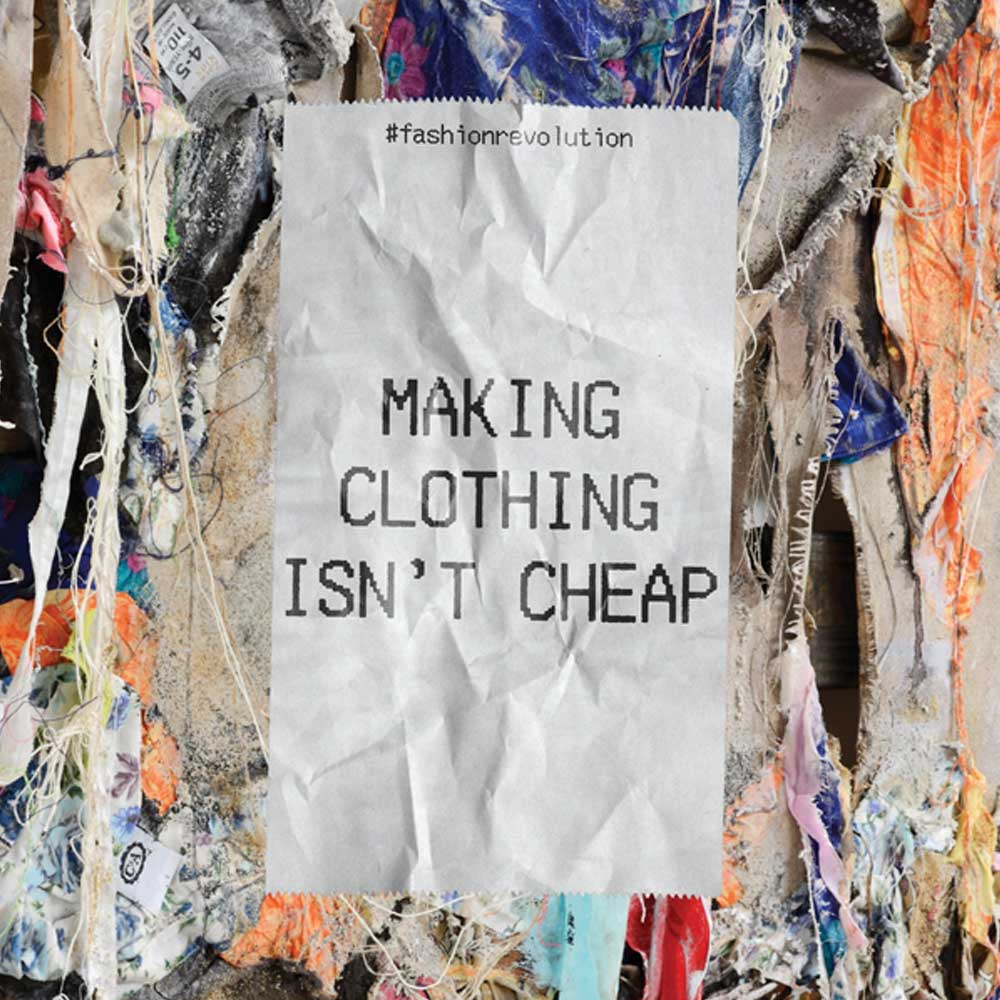Fashion Revolution Week 2022
“Who made my clothes?” – that’s the key question of Fashion Revolution Week, which takes place annually in the week around the 24th April. During the week, the focus shifts from the big brands and their ambassadors to the people behind the brands: the sewers and producers. The goal is to increase transparency of supply chains and production conditions and create more awareness of sustainable fashion consumption.
by mey 18/04/2022
Why is there a Fashion Revolution Week and when does it take place?
Fashion Revolution Week was created in response to the major disaster at the Rana Plaza garment factory on 24 April 2013. It is hosted by the Fashion Revolution association – the largest global activist fashion movement.
Two floors were illegally placed on top of the Rana Plaza garment company building. The day before the accident, cracks were visible in the walls. On 24 April 2013, these illegal additions resulted in the collapse of the building. This resulted in the deaths of 1134 people and injuries to 2500 people.
The collapsed factory had been manufacturing for many large and well-known fashion companies. These people lost their lives because the companies that contracted the factory were not willing to invest in a safe and healthy working environment – because they wanted to save money and keep prices as low as possible for the end consumer.
After the disaster, it became clear that there was an urgent need for action to create safe and humane working conditions. In order to achieve this, large companies and fashion brands first need to bring transparency into their supply and production chains, which are often so complex that not even the brands themselves know who ultimately produces for them.
The question “Who makes your clothes?” forces companies to identify this. This question in turn opens up further questions about fair and decent working conditions.
How can you take part in Fashion Revolution Week?
Both consumers and end users as well as companies can take part in Fashion Revolution Week.
Consumers are invited to ask big companies the question “Who made my clothes?”. They can do this, for example, by taking a photo of a garment's label, uploading it to social media with the hashtag #whomademyclothes and tagging the brand. There are also several events, workshops and talks that you can take part in.
Companies have the opportunity to provide information about their production and delivery conditions. Questions they could answer in the process are, for example: Are goods produced in-house, by third parties or by contractors? Where are the goods manufactured? What are the production steps? Where are raw materials sourced from and who manufactures them? What does the company do to ensure supplier safety?
How can consumers ensure that they are buying sustainable and fair clothing?
Thankfully, issues like sustainability and fair fashion are becoming increasingly prominent. Consumers demand more transparency and want to know where their clothes come from and whether their clothes have been produced sustainably. It is therefore increasingly important that companies communicate this information effectively to the consumer.
One way consumers can identify sustainable and fair clothing is through different labels, such as the GOTS seal and the Fair Wear seal. The GOTS seal evaluates social criteria and environmental requirements for textiles made of naturally sourced fibres. The RE:THINK and Superfine Organic series by mey for instance are already GOTS certified. The Fair Wear label assesses fair production conditions in the textile manufacturing chain in countries such as Bangladesh, China, India, Tunisia and Vietnam. As mey produces mainly in countries that are not deemed to be critical by the Fair Wear seal, we are unfortunately not allowed to use this seal.
As well as these two seals, mey clothing has been awarded various other certificates such as the Green Button, the FSC seal and the Oeko-Tex seal. These are designed to make it easier for consumers to recognise sustainable and certified goods.
Transparent production at mey
As well as gaining certifications, it has always been important to us to give our customers the best possible insight into our production. At mey, we manufacture around 76% of our products in our own production facilities at three main locations, all of which are based in Europe (Albstadt, Portugal, Hungary). Our sewers, knitters etc. all work on site. This allows us to ensure that all our employees work only under fair conditions. We have drawn up a Code of Conduct for all our external suppliers. This provides behavioural guidance that our suppliers have to comply with if they want to work with us.
We feel it is important to keep promoting the importance of fair fashion and to educate people on why fair and sustainable clothing is not cheap. Companies that want to guarantee that all materials used come from sustainable production and that the entire value creation process is fair for all employees cannot produce shirts for €2 or underwear for less than €10. Consumers should be aware of this and consider it when shopping.


